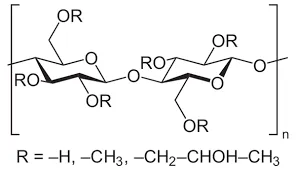
ធ្នូ . 12, 2024 15:19 Back to list
hydroxyethylcellulose powder
Hydroxyethylcellulose An Overview of Its Properties and Applications
Hydroxyethylcellulose (HEC) is a non-ionic, water-soluble polymer derived from cellulose, a natural polysaccharide found in the cell walls of plants. Since its discovery, HEC has gained significant attention for its versatile properties and wide range of applications across various industries, from pharmaceuticals to cosmetics, food, and construction. This article provides a comprehensive overview of hydroxyethylcellulose, including its chemical properties, manufacturing process, uses, and benefits.
Chemical Properties of Hydroxyethylcellulose
HEC is characterized by its unique molecular structure, which is comprised of a backbone of glucose units derived from cellulose. The hydroxyethyl groups attached to the cellulose chains introduce hydrophilicity, enhancing the polymer's solubility in water. This modification allows HEC to excel as a thickening agent and stabilizer in various formulations. The degree of substitution of hydroxyethyl groups affects the viscosity and solubility of HEC, making it highly customizable for specific applications.
HEC exhibits pseudoplastic behavior, meaning its viscosity decreases under shear stress and recovers when the stress is removed. This property is particularly useful in formulations that require easy handling and application, such as creams, gels, and coatings. HEC is also resistant to degradation by heat and is stable over a wide pH range, further enhancing its applicability.
Manufacturing Process
The manufacturing process of hydroxyethylcellulose typically involves the alkalization of cellulose fibers in the presence of ethylene oxide. This reaction introduces hydroxyethyl groups onto the cellulose chains. The resulting product is then purified, dried, and milled into a fine powder. The viscosity of HEC can be tailored during the manufacturing process by adjusting the degree of substitution and the molecular weight of the cellulose used.
To ensure consistency and quality, manufacturers conduct rigorous testing and quality control measures throughout the production process. This ensures that the final product meets the specific viscosity and solubility requirements for its intended application.
hydroxyethylcellulose powder

Applications of Hydroxyethylcellulose
1. Pharmaceuticals HEC is frequently employed in drug formulations due to its excellent film-forming, thickening, and stabilizing properties. It is used in gels, suspensions, and topical formulations to enhance the bioavailability and stability of active pharmaceutical ingredients. Furthermore, HEC serves as an excipient in sustained-release formulations, allowing for controlled drug release over time.
2. Cosmetics and Personal Care In the cosmetics industry, HEC is used as a thickener and stabilizer in products such as shampoos, conditioners, lotions, and creams. Its ability to provide a smooth and creamy texture enhances the sensory experience of cosmetic products. Additionally, HEC is effective in providing moisture retention in skincare formulations, making it a sought-after ingredient in moisturizers and serums.
3. Food Industry HEC’s thickening and emulsifying properties are utilized in various food products, including sauces, dressings, and dairy items. It acts as a stabilizer to prevent separation and improve texture, contributing to enhanced mouthfeel and overall product quality. Moreover, HEC is considered food-safe and is often used in gluten-free products to improve texture.
4. Construction HEC is employed as an additive in construction materials such as mortar, cement, and adhesives. It enhances the workability and adhesion properties of these materials, allowing for ease of application and improved performance. Furthermore, HEC helps to retain water in construction mixtures, preventing premature drying and contributing to better curing.
Benefits of Hydroxyethylcellulose
The versatility of hydroxyethylcellulose offers numerous benefits across multiple industries. Its non-toxic and biodegradable nature makes it an environmentally friendly choice for formulators looking to reduce their environmental impact. Additionally, HEC's ability to improve texture, stability, and performance in a variety of applications is invaluable for manufacturers striving to meet consumer demands for high-quality products.
In summary, hydroxyethylcellulose is a multifunctional polymer with diverse applications that continue to expand across various sectors. Its unique properties, ease of use, and safety profile make it a preferred choice for formulators aiming to improve the quality and efficacy of their products. As industries evolve and seek sustainable solutions, the relevance and importance of HEC are likely to grow, paving the way for innovative applications in the future.
-
Versatile Hpmc Uses in Different Industries
NewsJun.19,2025
-
Redispersible Powder's Role in Enhancing Durability of Construction Products
NewsJun.19,2025
-
Hydroxyethyl Cellulose Applications Driving Green Industrial Processes
NewsJun.19,2025
-
Exploring Different Redispersible Polymer Powder
NewsJun.19,2025
-
Choosing the Right Mortar Bonding Agent
NewsJun.19,2025
-
Applications and Significance of China Hpmc in Modern Industries
NewsJun.19,2025







